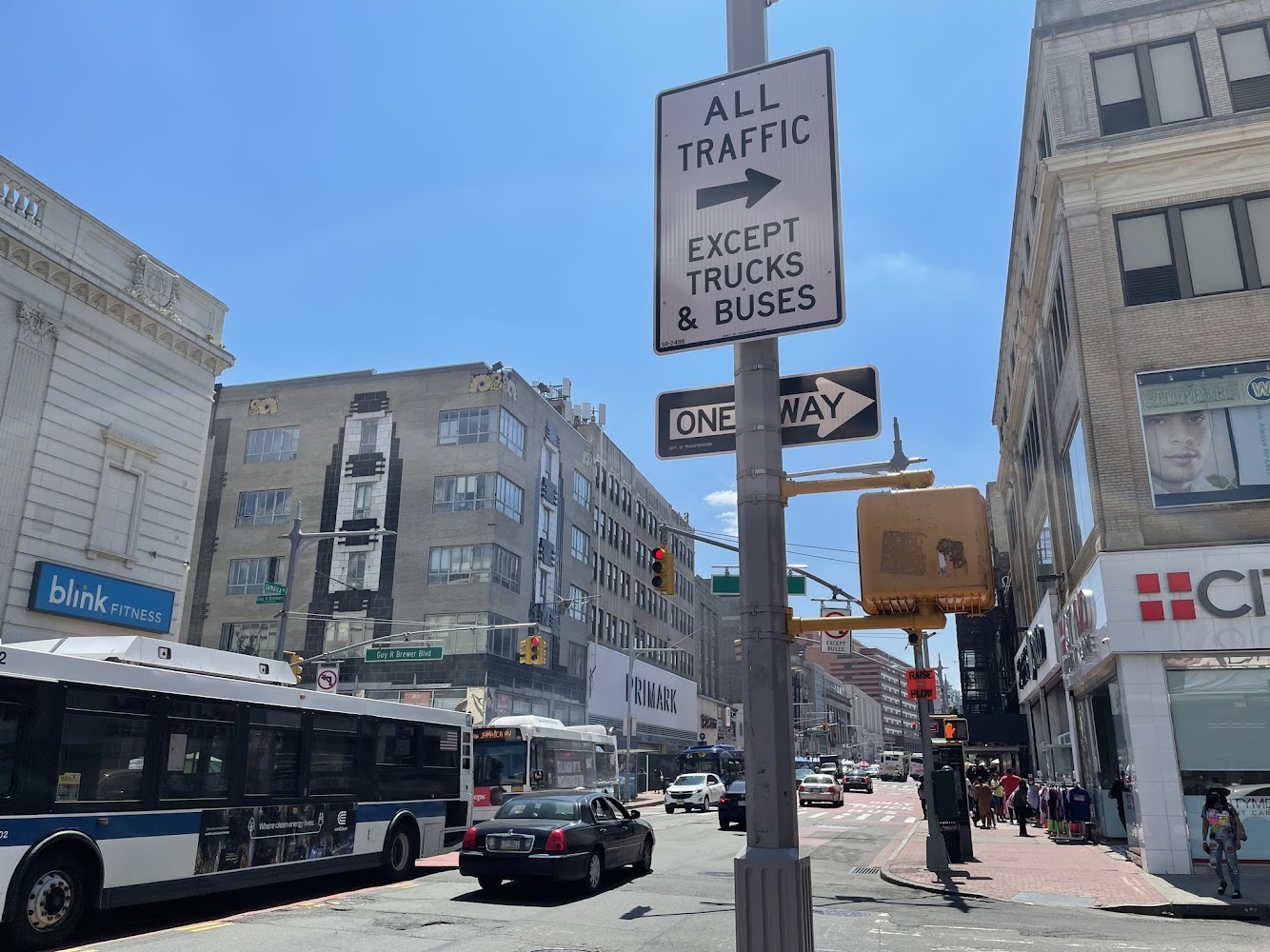Get stuff done — just a little less of it.
The Adams administration is making busways on Jamaica and Archer avenues permanent after a one-year pilot, but it will cut the hours of one of the two bus-priority corridors in southeast Queens following other busway hour reductions elsewhere.
Officials scaled back the Jamaica Avenue busway's operating hours from 24 hours a day, seven days a week, to 6 a.m.–8 p.m. daily, while Archer Avenue will remain in operation around the clock, according to the Department of Transportation.
That's despite Jamaica Avenue suffering slower bus speeds of 4.7 to 4.9 miles per hour than Archer Avenue's average speeds of 5.7 to 6.1 mph before the city limited through-traffic to speed up commutes for the quarter-million daily straphangers on the two busy Downtown Jamaica thoroughfares.
DOT spokesman Vin Barone said the hour reductions were in response to requests by local businesses.
DOT on Monday also finally started installing the Northern Boulevard bus lanes on the other side of the World's Borough between Woodside and Corona, after being stalled for months because Council Member Francisco Moya had reportedly lobbied the Adams administration behind the scenes against the project, delaying the project's implementation for months.
The Northern Boulevard dedicated bus lane will run between Broadway and 114th Street, and DOT plans to finish it up in spring of 2023.
The 181st Street busway in Washington Heights will become permanent as well, DOT said, with two hours trimmed off the evening, which the agency already told uptown community groups in June. Adams at the time said DOT "heard from the community," prompting the modified plans.
The Adams administration reduced the hours for every busway project that Hizzoner made permanent after they were originally rolled out by former Mayor Bill de Blasio, starting with slashing the Main Street busway's schedule in Flushing, Queens, by 13 hours, then 181st Street, and now Jamaica Avenue.
The busways aimed at clearing traffic to make trips faster for 14 bus routes on Jamaica Avenue and 19 lines on Archer Avenue, while also improving truck movement and deliveries along Jamaica Avenue.
On Jamaica Avenue, between Sutphin Boulevard and 168th Street, only buses, trucks, and emergency vehicles are allowed to make through trips. All other vehicles can make local trips for drop-offs and pickups, but must make the next turn right off the busway.
Archer Avenue only allows through traffic for buses and emergency vehicles with no local access for other drivers.
Like with the previous busway projects, travel speeds increased on Jamaica Avenue, making trips up to 34 percent faster, according to DOT. The majority, or 61 percent, of visitors to the corridor traveled there by bus, the agency found.
"We understand that strong bus infrastructure is a necessity; that is why we have also made busways permanent on three critical arteries in Manhattan and Queens. We will continue collaborating with the MTA and our community partners as we tackle these important projects," said DOT Commissioner Ydanis Rodríguez in a statement.
But the Downtown Jamaica busways have faced fierce opposition from the two local council members, Nantasha Williams and Selvena Brooks-Powers, who called on the city to eliminate the traffic restrictions, lamenting that they were inconveniencing drivers and hurting area businesses.
Brooks-Powers, who chairs the Council's Transportation committee, claimed during a June hearing that "people cannot access our local businesses," even though the restrictions just banned through-traffic on Jamaica Avenue, and still allowed drivers local access as long as they took the next right off the busway.
Queens Borough President Donovan Richards, the two city reps, along with a who's who of southeast Queens politicians penned a letter to DOT in August calling for the Jamaica Avenue busway to only be on weekdays from 6–10 a.m. and from 4–7 p.m.
The missive was also signed by Council Speaker Adrienne Adams and State Sen. Leroy Comrie — who chairs the Senate committee that oversees the Metropolitan Transportation Authority, whose buses are being held up by traffic in Downtown Jamaica.
A spokesperson for Richards said the Queens beep still thinks the busway should only be in operation during those weekday rush hours.
"The Borough President still believes in and stands by the specific recommendations made in this letter,” said Chris Barca.
Williams and Brooks-Powers did not respond to a request for comment.
One transit advocate lauded Mayor Adams for not cutting the hours as deeply as local pols had wanted, but cautioned against giving in to localized interests over bus riders who come from all over the borough.
"It’s important to know what people in Rosedale and Cambria Heights think, because they’re the ones whose epic and punishingly long commutes are impacted by the slow traffic in Downtown Jamaica," said Danny Pearlstein of the group Riders Alliance. "We need a rock-solid commitment from City Hall to ignore parochial interests and wealthy car owners, to move bus riders more quickly."





